8 Magical Towns in Central Istria that Are Absolutely Worth Visiting
May 30, 2022 - Istria is one of the most fascinating regions of Croatia, and while most are more familiar with its magical seaside towns like Pula, Rovinj, Umag, or Poreč, the many medieval towns in Central Istria are just as impressive and definitely worth being explored.
In recent years, Istria has shown its might as a tourist destination, defying the surreal circumstances caused by the coronavirus pandemic by being easily reached by land from other European countries. But Istria is not at all a consolation prize for its proximity, quite the opposite. The largest peninsula in the Adriatic is home to spectacular towns, world-renowned wines and olive oils, unique cuisine, numerous beaches, five-star hotels, and a wealth of culture and history.
But not everyone comes up with an idea of this region beyond the sea, the islands, and the beaches, something that happens similarly in Dalmatia. Some forget that much of Istria's magic lies (not so) far from the coast. With this in mind, here we show you some of the best destinations you can visit in Central Istria. Warning: Not to be confused with Central Istria as a public administration, since it only covers some districts. In this article, we will mention destinations on the Istrian peninsula that are not located by the sea.
Pazin
Located right in the heart of Istria, Pazin is known for medieval Pazin Castle, the former residence of the Istrian margraves. The intensity of life here is pretty much the same in winter and summer, with the monthly exception of every first Tuesday, when a flood of curious buyers from all over Istria runs into the town to visit the traditional Pazin Market. Pazin is very rich in culture and history due to the presence of different civilizations, empires, and governments throughout time. Be sure to visit the Pazin castle, the Pazin abyss, the Franciscan monastery, the Memorial Center of Union and Freedom, the state archives, and more. Learn more about Pazin here.
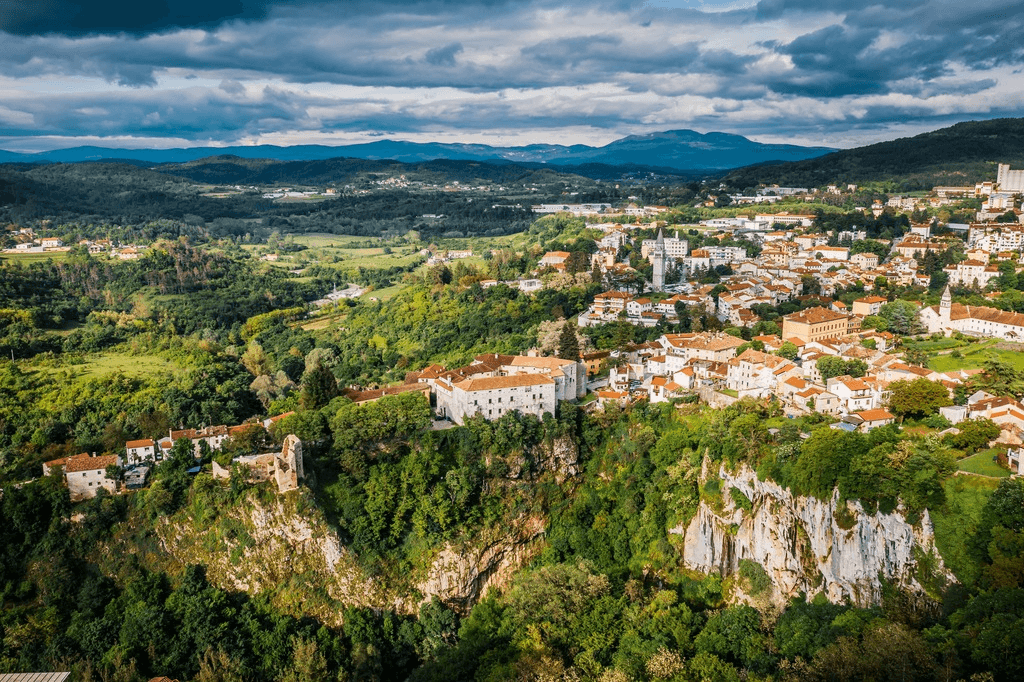
Image: Tourist Board of Central Istria/Official Website
Motovun
Motovun sits on top of a hill towering over the valley of Mirna, the biggest Istrian river. The location was settled since Celtic times, but the town we know today was mostly built under Venetian rule in the Middle Ages. Its centuries-old walls and buildings are the best preserved in Istria, giving the place a unique charm. Yet Motovun is more than its quaint architecture and breathtaking view. It is the Croatian capital of truffles and hosts a famous film festival, which will take place from July 26 to 30 this year. Learn more about Motovun here.
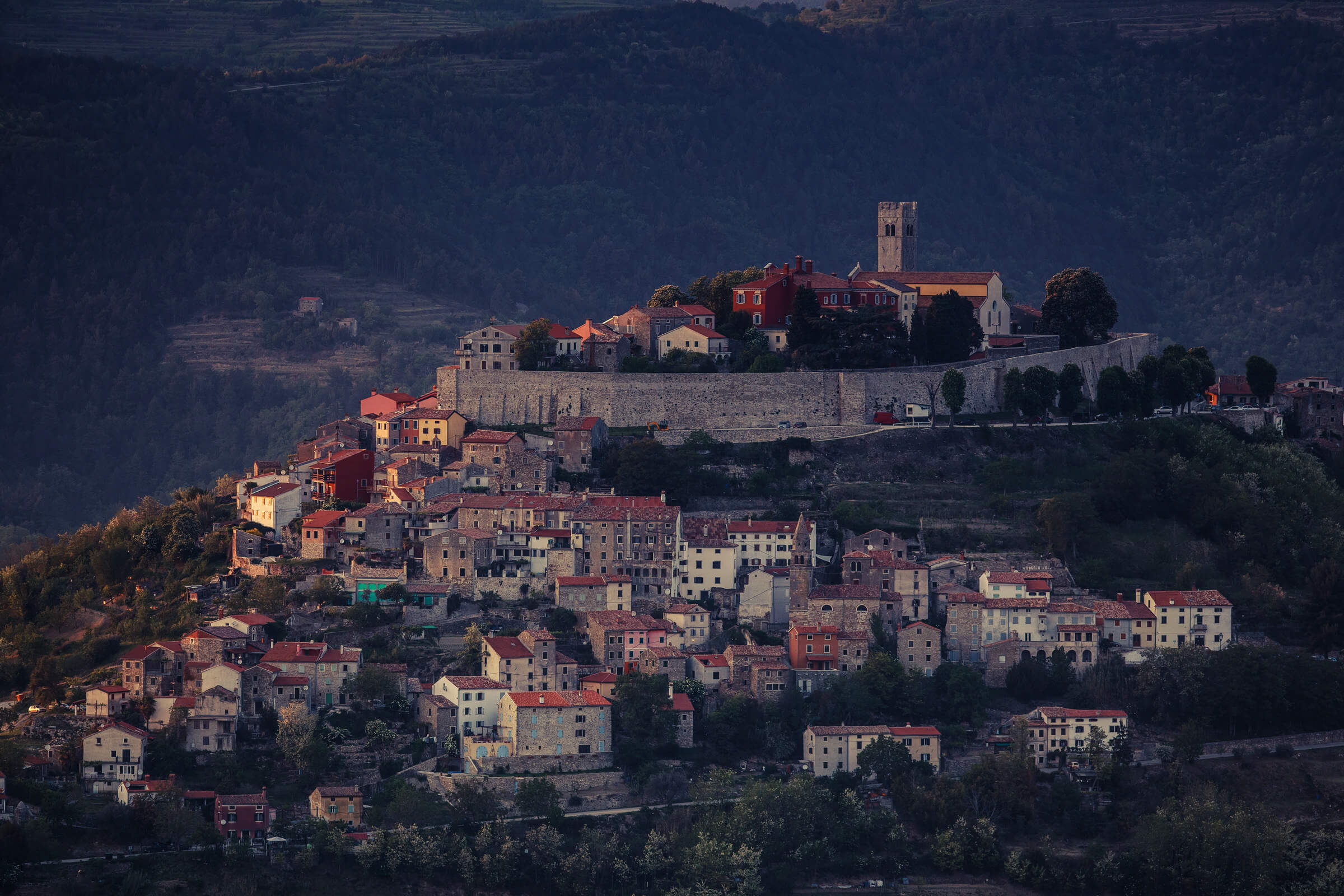
Photo: Mario Romulić
Hum
Often referred to as the smallest town in the world, Hum is a town situated on a hilltop above the source of the Mirna River. It is located in the vicinity of Buzet and Roč. The towns of Roč and Hum have been connected through a shared history and culture since ancient times, and are now also connected by the famous Glagolitic Alley. Hum has just 20 inhabitants, and therefore its well-known name as the smallest town in the world. Learn more from Hum here.
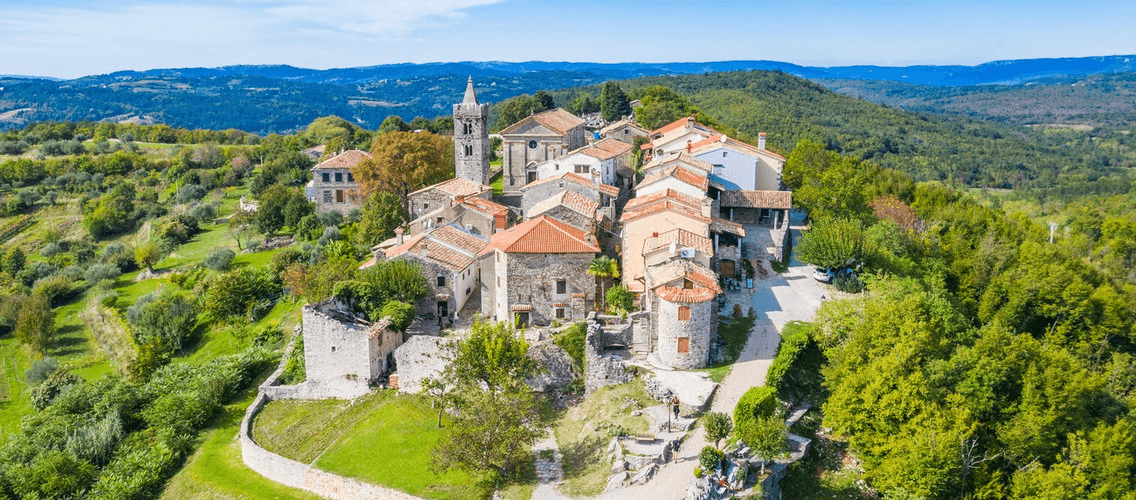
Image: www.valamar-experience.com
Labin
Labin is the biggest town in the otherwise not-so-populated and not-so-popular eastern Istria. In the past, the town was known for its coal mines. Nowadays, all the mines have been closed, and there are no more miners. The community is turning more and more towards tourism - but is far from being overwhelmed by it. Its old town, sitting on top of a hill, is among the most beautiful ones on the peninsula. Although it's not located by the sea, and exactly because of that, Labin has a stunning view of Kvarner bay. Learn more about Labin here.
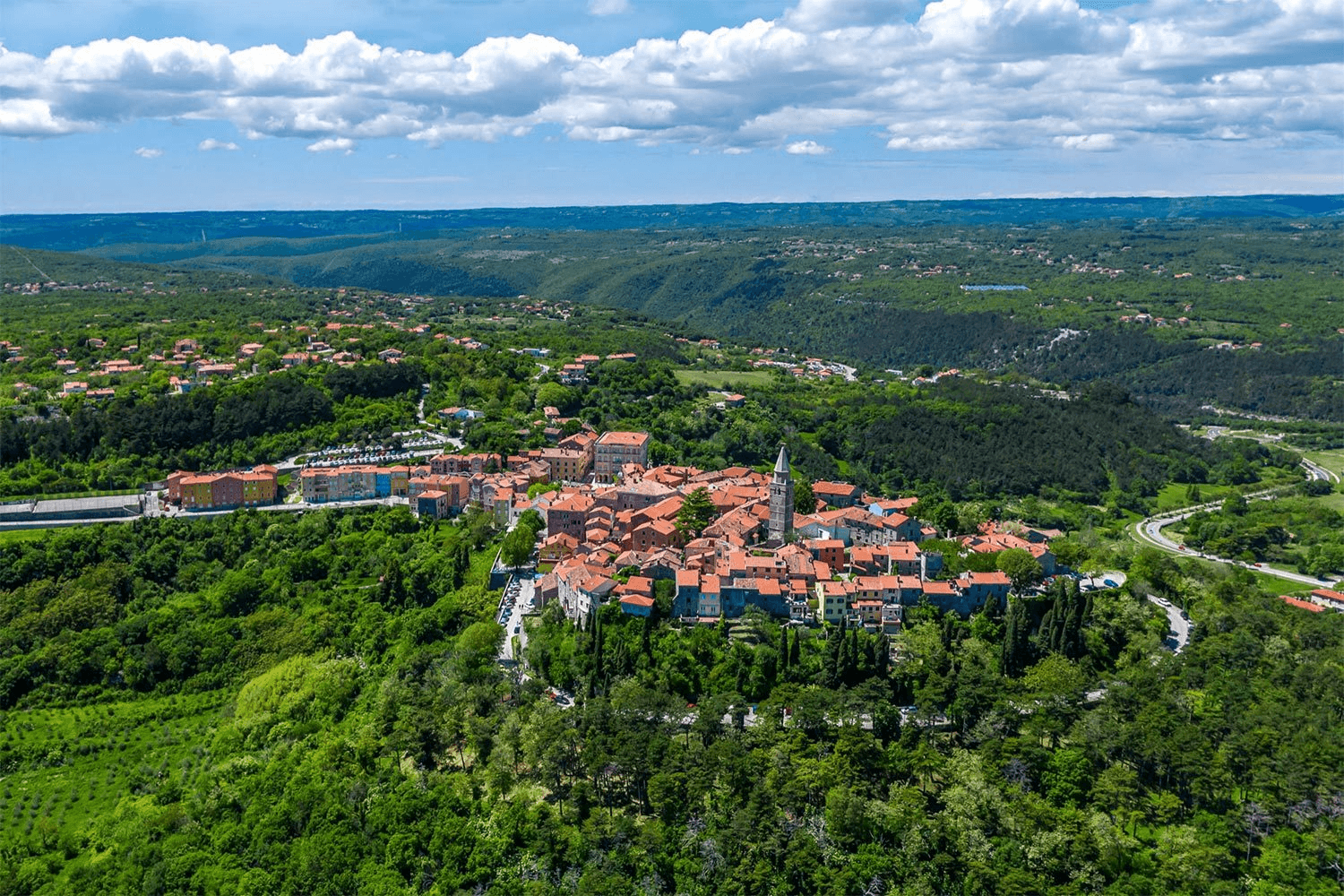
Image: Labin-Rabac Tourist Board/Official website
Vodnjan
Vodnjan is situated near Pula, where excellent olive oil is produced, and its surroundings have the largest number of kažun houses, dry-stone houses in the Mediterranean. The largest church in Istria –Parish Church of St Blase was built at the end of the 18th century, with the 63-meter-high bell tower. The church holds a valuable collection of sacral art and preserved bodies of saints, the so-called Vodnjan mummies, due to which it is visited by around 16000 people a year. Learn more from Vodnjan here.

Image: www.visit-croatia.hr
Buje
The area of the town of Buje is located in the northwestern part of the Istrian peninsula. Approximately 5,300 inhabitants live in an area of 103.40 km2. The town of Buje is located between the rivers Mirna and Dragonja. In the north, there are the hills of the Upper Buje, and in the south the Adriatic Sea in Kanegra and the Piran Bay. It is a rolling and hilly area covered with vineyards, olive groves, and arable land dotted with oak, cherry, and pine forests, a karst belt full of interesting geological phenomena, and meadows of Mediterranean vegetation, among which thyme and spruce predominate. Learn more about Buje here.
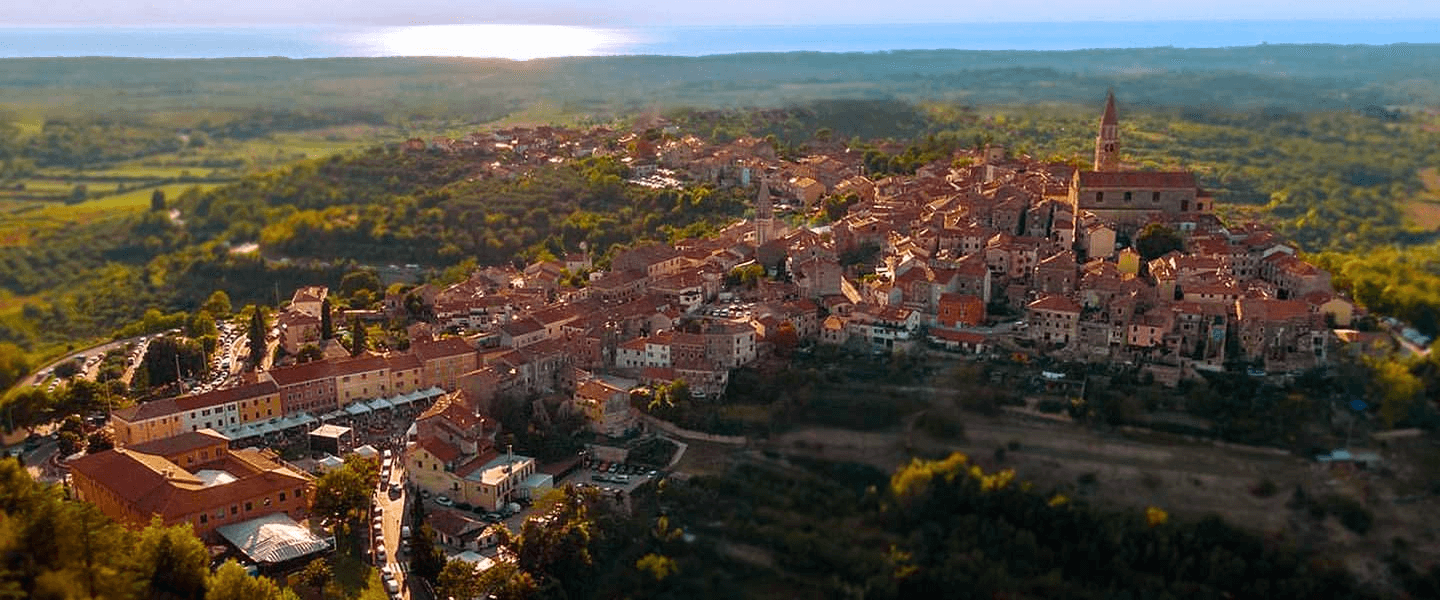
Grožnjan
The nearby Motovun might be the quintessential Istrian hilltop town, but Grožnjan is also well worth visiting. As is the case with many Istrian towns, it was settled during the Roman times, built under Venetian rule in Middle Ages, and well preserved up to today. The place was almost deserted after World War II, but in 1965 a group of artists decided to turn the town into an art colony, which remains up to the present. It’s a great accommodation spot for those who don’t need the sea, and it makes for a good base for exploring the hilly part of Istria. Learn more about Grožnjan here.
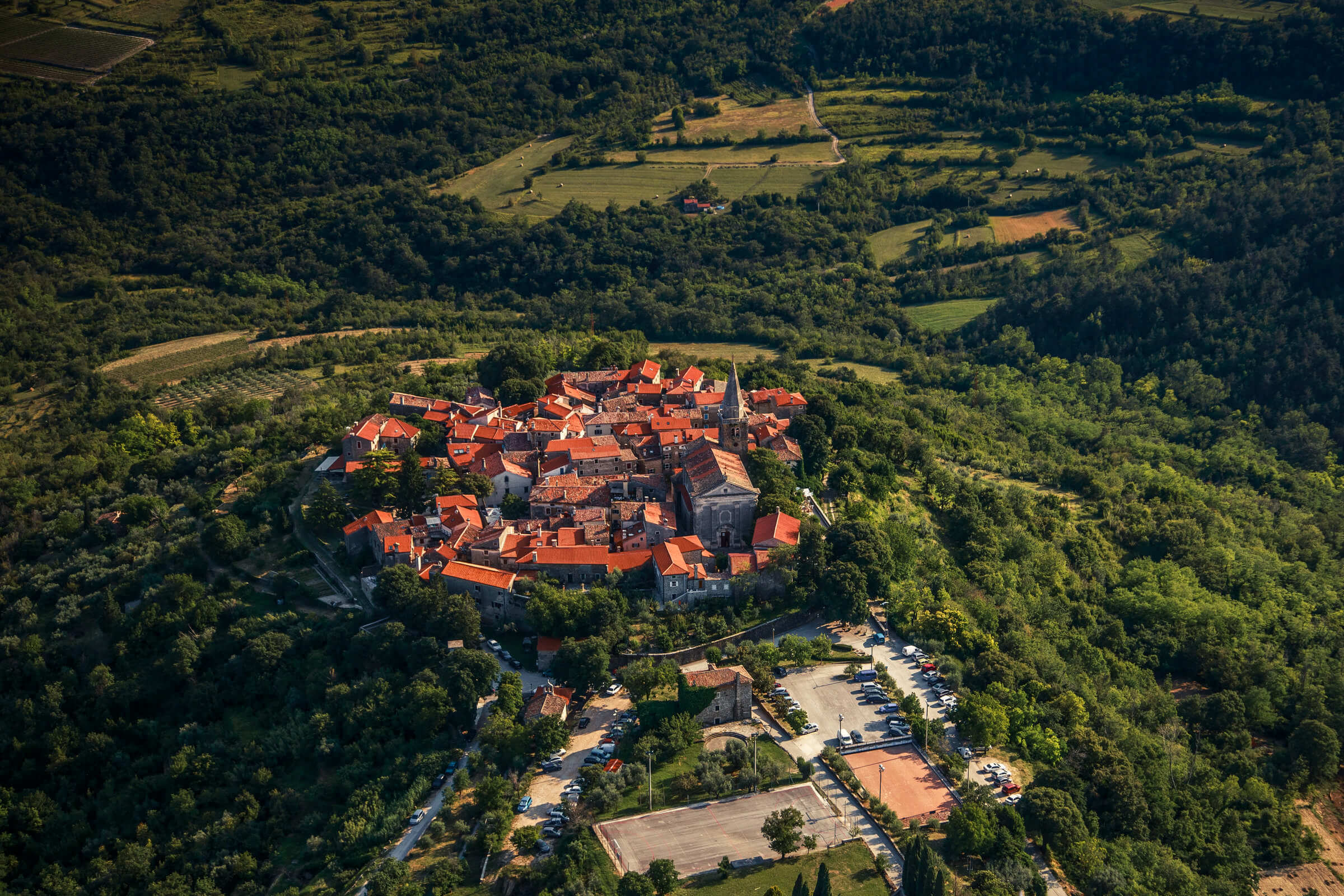
Photo: Mario Romulić
Pićan
Sometimes it is not easy to follow the traces of Pićan in historical sources because it hides under various names. The origin of the name Petina is attributed by some to the assumption that the Diocese of Pićan was the fifth in the world, with the word five (pet, in Croatian) having Celtic roots. Pićan is certainly inhabited in distant prehistory. The oldest parts of the Istrian hillfort were located on the hill of Calvary, north of today's settlement, and then it is assumed that the Celtic tribe Secusa lived there. In Roman times, probably in the same strategically well-chosen place, there was a military stronghold and the settlement of Petina. Learn more about Pićan here.
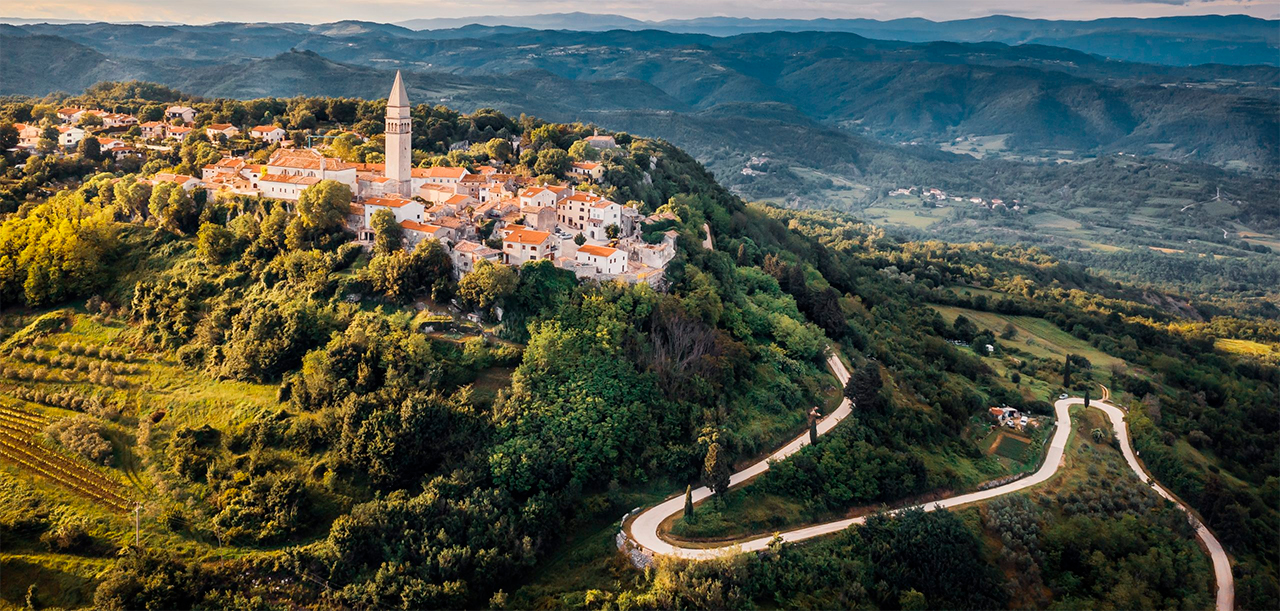
Image: Pićan municipality/Official website
For more on travel in Croatia, follow TCN's dedicated page.
Public Humiliation, the Old-Fashioned Way: Pillars of Shame in Croatia
February 27th, 2022 - Public shaming nowadays mostly takes place on social media, so we tend to forget that it once used to have a much more tangible form. Have you ever seen a pillar of shame in Croatia?
In a village called Salež, not far from Buzet town in Istria, stands a solemn monolith. A human figure carved in stone, weathered and overgrown with moss.
It’s not an old deity you’re looking at, but a pillar of shame, a once popular tool for punishment by public humiliation.
Transgressors of all kinds were tied or chained to stone pillars, typically set up on town squares or other public places of gathering, and left to the mercy of the mob. The more severe the offence, the longer the convicts had to endure the misery, with more serious crimes often warranting corporal punishment on top of the humiliating public exposure.
 Pillar of shame in Salež, Istria / Buzet Tourist Board Facebook
Pillar of shame in Salež, Istria / Buzet Tourist Board Facebook
Pillars of shame existed all over Europe, Croatia being no exception. Public shaming was judicially sanctioned until emperor Joseph II banned it as a method of criminal punishment in the 18th century.
The practice lived on in other ways; most recently, it moved to the virtual space where it assumed a more insidious form. Social media only seems to instigate the mob mentality, and gone are the days of public punishment lasting an hour or two - your past transgressions are forever saved for anyone to find. The internet never forgets, and the old stone pillars and chains almost seem benign in comparison.
In Croatia, several pillars of shame survive to this day. The anonymous figure in Salež is arguably the most unique of the lot - and the most unsettling - as it’s the only one that has a human form.
Among the locals, the pillar is known as Berlin, getting its name after berlina, a type of four-seat carriage that once operated on the route Berlin - Paris and was used for transportation and public shaming of convicts. Berlin the pillar is made of white stone that isn’t naturally found in the area. The figure wears a cap, and is resting its left hand on his chest, on a spot once used to clip the chains with which the convicts were tied.
There’s an inscription in Latin on the front of the figure, barely visible, translating to justice to this poor province.
A local named Mate Grižančić recalls that the village elders used to speak of the pillar being brought to Salež on a carriage adorned in flowers, pulled by six of their strongest oxen. A parade of eighteen girls dressed in white followed the carriage as it rolled into town.
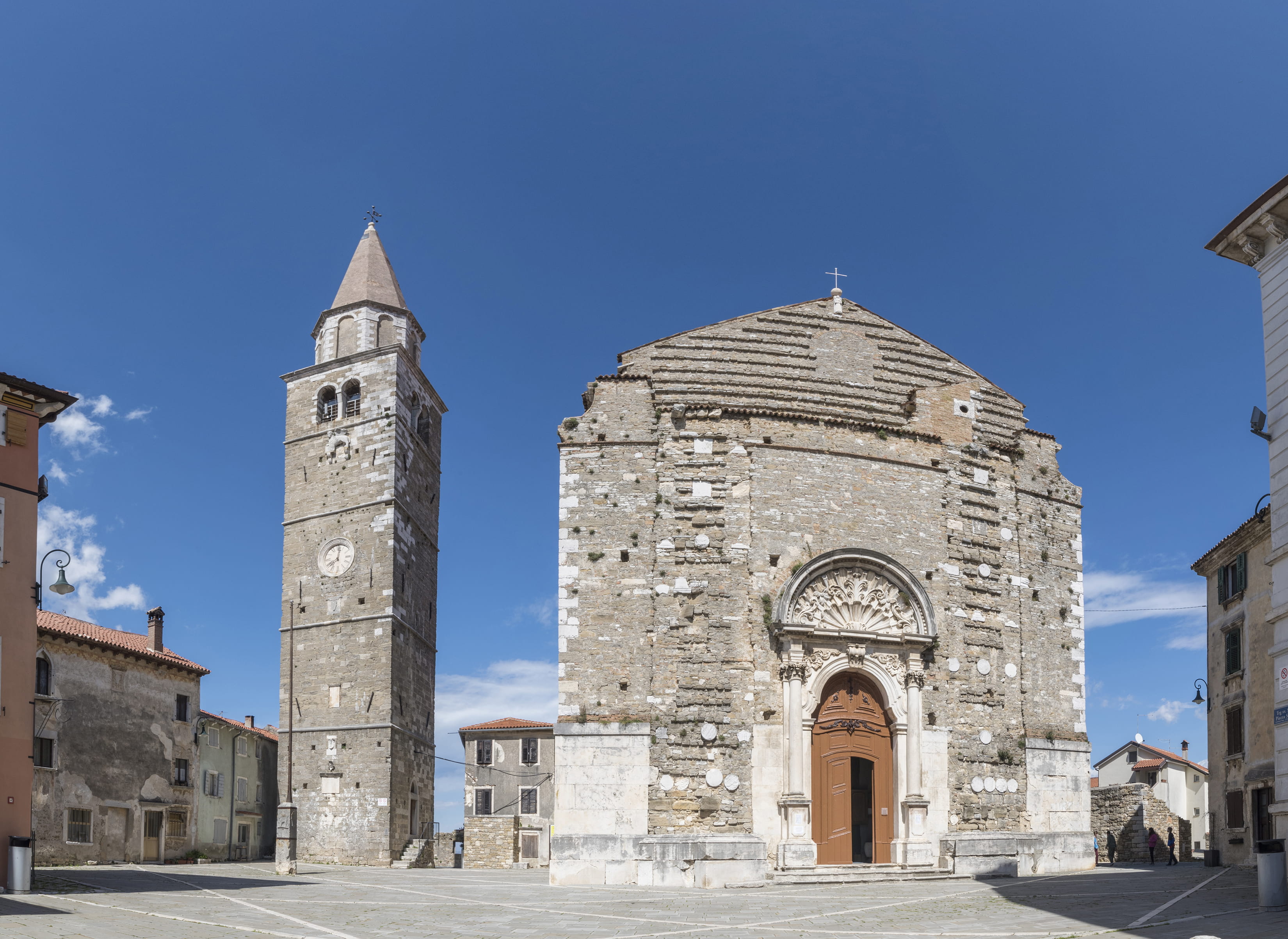 Church of St. Servulus in Buje / istra.hr
Church of St. Servulus in Buje / istra.hr
Another pillar of shame in Istria is found in Buje. The town is truly the best of both worlds where Istria is considered: it spans over two inland hills, giving off the classic Istrian-hilltop-town vibes, with the sea glimmering on the horizon as the coast is only 10 kilometres away.
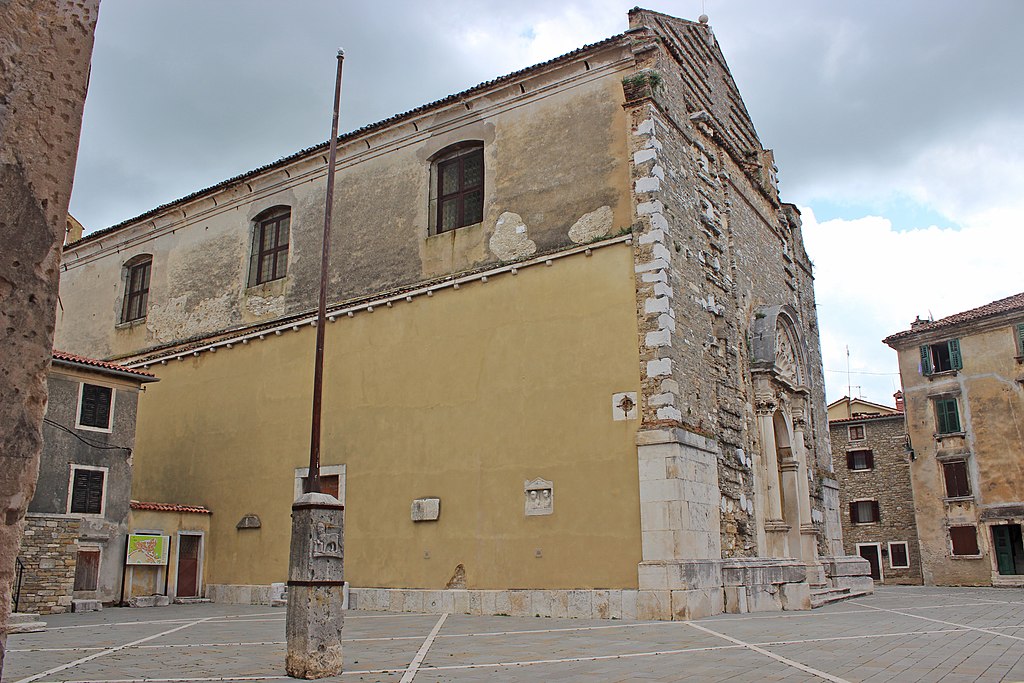 Pillar of shame, church of St. Servulus in Buje / Creative Commons
Pillar of shame, church of St. Servulus in Buje / Creative Commons
At the highest point in town, in front of the imposing Baroque church of St. Servulus, you’ll find a pillar that was reportedly used for public humiliation in the 17th century, and later as a flag pole. Spot the Venetian lion on the pillar and elsewhere in town, remnants of the long period of Venetian rule.
An honorary mention goes to Sveti Lovreč, one of the best preserved fortified medieval settlements in Istria which gets its name from the small church of St. Lawrence.
Perched in the centre of the main square is a pillar of shame that’s only partially preserved, standing on a pedestal.
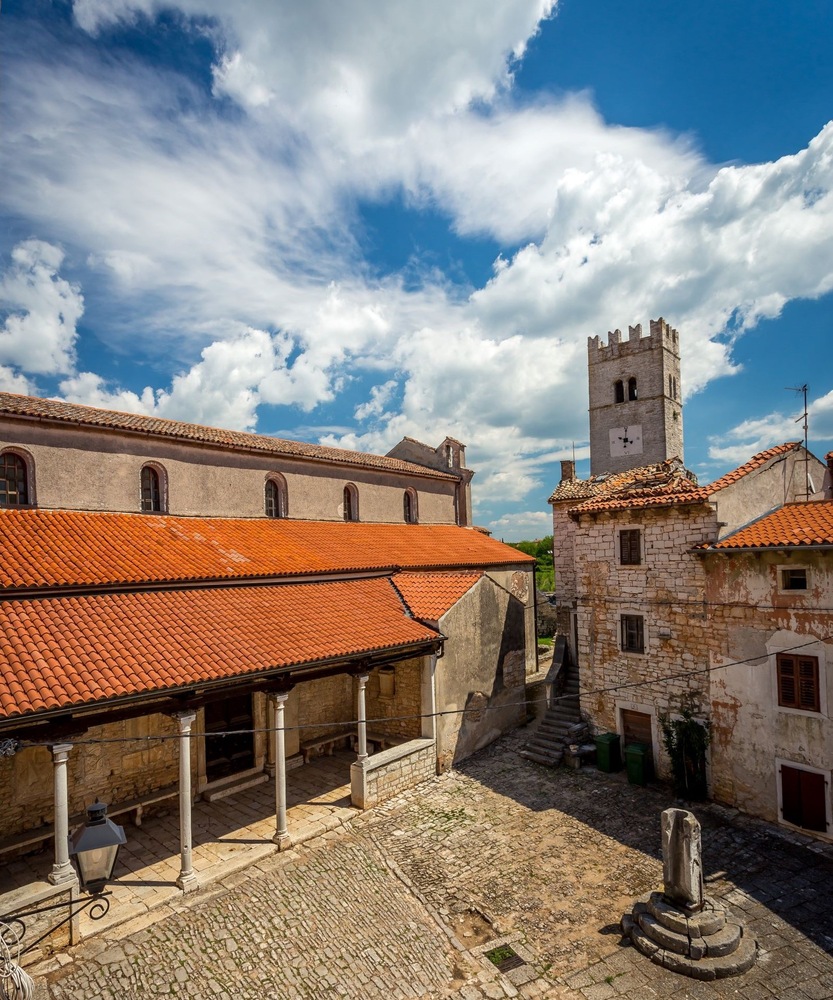 Sveti Lovreč, pillar of shame in the bottom right corner / Image by Central Istria Tourist Board
Sveti Lovreč, pillar of shame in the bottom right corner / Image by Central Istria Tourist Board
Public shaming sure seems to have been a popular method of punishment in Istria - what about the rest of Croatia?
Quite a unique landmark is found in Vinica near Varaždin. It’s locally known as pranger, named after the German term for a pillar of shame. Originally located at the Vinica fortress, the pranger was moved several times and is now installed at the Matija Gubec Square.
The three-sided pillar is slightly reminiscent of an obelisk; each side is crowned with a man’s head, carved in stone. The three faces all have different features, but share a chiselled moustache as a common trait.
 Pillar of shame in Vinica / Zagreb Nekada Facebook
Pillar of shame in Vinica / Zagreb Nekada Facebook
Next to the central figure, the year 1643 is engraved, followed by a Latin inscription:
IVSTAM MENSVR(AM) TENETE
Measure honestly, it warns. Together with the round stone vessel installed on the pedestal, the inscription points to the fact that the Vinica pillar doubled as a measuring tool. Grain and similar produce were measured with the help of stone pots since medieval times; the merchants who were caught trying to cheat their customers ended up tied to the pillar and were given a thorough thrashing - verbal or otherwise.
On the coast, a famous specimen of its kind is found in Zadar, standing at the northwest side of the Roman forum.
Given its former purpose, the slender column looks much more intimidating than its Istrian counterparts. Fourteen metres tall and ancient Roman in origin, the column was repurposed into a pillar of shame in the Middle Ages.
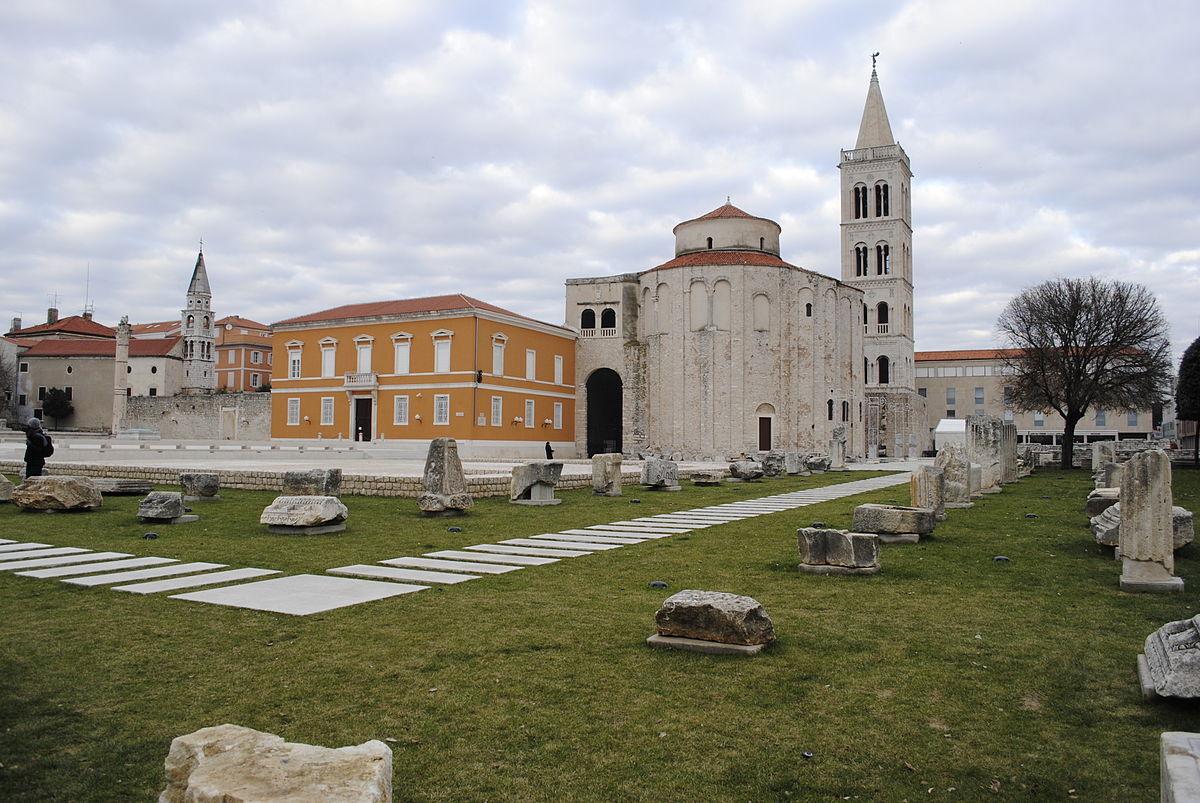 Roman forum in Zadar, pillar of shame on the left / Creative Commons
Roman forum in Zadar, pillar of shame on the left / Creative Commons
Nowadays one of the most popular spots in town, the location surely used to instil unease in the local population back in the day. Offenders of all kinds were chained to the pillar and left exposed in public for several hours on average.
Women who were caught emptying their night pots through the window or throwing any other kind of garbage into the street got an hour on the pillar. A sign was hung around their neck that read šporkulja - a title that doesn’t translate well, but indicates the woman was messy or dirty.
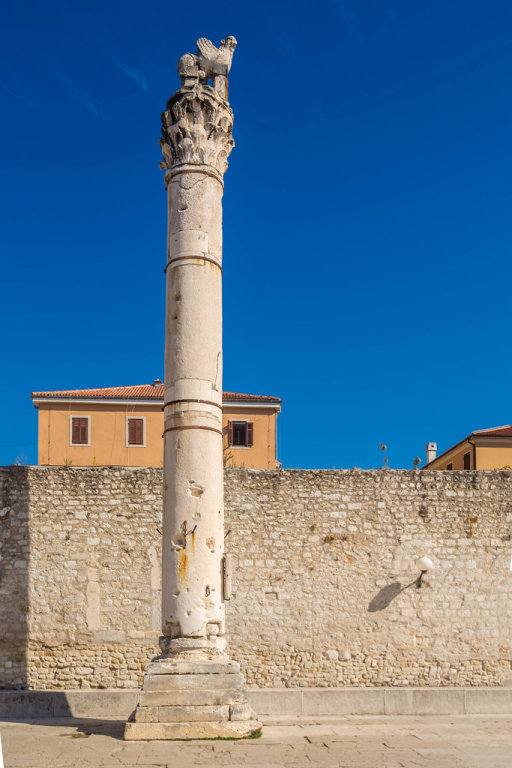 Pillar of shame in Zadar / Marco Verch, Creative Commons
Pillar of shame in Zadar / Marco Verch, Creative Commons
Other offenders were given a sign as well, listing all their transgressions; theft and solicitation were the most common offences. The gathered masses were happy to hurl insults at them, as well as a wide range of objects. If a person was accused of theft, they’d get a lashing on top of being harassed by the public.
Offenders were often forced to pay a fine for the privilege of pillar use after the entire ordeal - a whole new level of adding insult to injury.
Further south, in the town of Omiš famed for its pirates, a pillar of shame stands on a square near the river Cetina. The final item on our list, the elegant column bears the insignia of the Venetian general, and it’s believed it dates to the 17th century.
Four Schools Combating Period Poverty in Croatia
April 9, 2021 - Following Scotland's policy and relevant scientific research on period poverty in Croatia, four schools in Croatia want to help female pupils in their struggles of womanhood.
10% of women in Croatia can't afford menstrual pads and tampons – showed the results of the first big research on period poverty in the country. Following these results, as Srednja.hr reports, Machinery and Traffic School Varaždin was the first to secure free menstrual products for pupils, and three schools in Istria are on the same path.
As confirmed to Istra.In, Vladimir Gortan High School in Buje already secured free menstrual products, Pula Gymnasium's execution is coming soon, and Buzet High School is trying to find a way to implement it.
„Graduation pupils from 4.B, class of Hotel-tourist technicians came to the idea to place a pads dispenser in the girl's bathroom so that girls can take pads when needed“, said psychologist Petra Bošnjak for Istra.In.
She added that the pupils originally thought to finance this change by themselves, but the school decided they can cover the expenses, while the pupil's duty is to follow the development and fill the dispenser with new pads when needed.
„Their notion was immediately accepted and put in place“, concluded Bošnjak.
While Pula Gymnasium still hasn't put the free menstrual products scheme in practice, they announced it to start this Monday, April 12th.
„Looking at the Varaždin school, we talked with the pedagogy service in school and decided to secure free menstrual products ourselves. I think it's a good approach to be more open towards women and as a school to send a message that we want a clear approach to topics we don't speak loud enough about and to more frequently talk about topics like equality which today is very very important“, said principal of Pula Gymnasium, Filip Zoričić.
The school will finance menstrual products and which will be available to the pupils in the psychology and pedagogy office.
As already mentioned, Buzet High School wants to implement the same help to girl pupils too, but the project is in the early stages, and the school vows to do everything in its power to make it a reality. Last week, they sent an inquiry to a drug store asking to sponsor free menstrual products for the girls at Buzet High School, but the drug store so far didn't respond.
„We still didn't get an answer, but we only sent it last week. We certainly want to make this idea a reality, and we won't give up until we find a sponsor for this action“, said principal Margareta Gumilar persistently.
With different stages of success in ensuring free menstrual products for their pupils, these schools are positioning themselves as champions of positive change for gender equality. They are fighting to remove one financial struggle for the pupils that certainly gives uneven position. The prices of menstrual products in Croatia range from 10 to over 20 kunas.
For more about made in Croatia, follow TCN's dedicated page.
Interview with L. Bottieri, Owner of Uje and Hotel San Canzian near Buje
In a very long interview given to tportal, Leopold Botteri, aged 47, a former journalist from Split turned entrepreneur tells the tale of his several companies, businesses and finally how he became a partial owner of a high-end hotel in Istria, Hotel San Canzian.
He tells Luka Filipović how he started from nothing and now his businesses make over 10 million kunas per year. Up until 2006, he worked in Slobodna Dalmacija, a local daily newspaper. His first foray into the business world was getting the olive growers from the island of Brač to join the Brachia cooperative, which turned into a brand of the olive oil under the same name - and then he started the company called Uje to distribute those products. Today there are 19 Uje stores in Croatia, distributing various olive oils and other delicatessen brands from Croatia. There are several restaurants operating under the brand, they're working closely with Croatia Airlines. His recent investments are in the Aqua Maritime clothes company, and building of the luxury boutique five-star hotel near Buje, Hotel San Canzian.
He explains to the journalist that the hotel is his first business extravagance, as up until now he's invested in what he knows and is competent at. But he and his partner Siniša Šare were looking for a vacation house and got the opportunity to purchase an estate with a renovated house near Buje. The house was too big, so they decided to build a hotel, similar in concept to Meneghetti estate. There will be one base house with the restaurant, bar and the reception, and all of the 25 rooms will have individual entrances. They're aiming at the guests who know what Istra is, who do not need explanations of the best hotels and restaurants around - so the prices will be according to that, upwards of 280€. There is a special villa within Hotel San Canzian with its own separate swimming pool and that will be priced at around a thousand euro per night at high season.
He also commented on the purchase of the Aqua company and brand, saying that this is a deal that made much more sense than the hotel. Uje and Aqua are in the same business, specialising in premium tourist souvenir market, and that their stores are often located in the same destinations: the towns with four-star hotels and guests who arrive by airplane. They have big plans for the company, as they plan to expand and grow the market further.
He says that he would be open to selling his share in Uje, as his idea is to make it as independent as possible, and then his position is negotiable. He explains his entrepreneurial start, when he was an editor of the "Olive" section of the paper and started the whole brand on his own, a bit more ambitious then he planned. He says that he's not the complaining type, that it's very easy to complain about everything in Croatia, but that complaining doesn't solve any problems and that it's a waste of time. He just wants to adjust to problems. He refuses to justify and failure with the market in Croatia because a high-quality product will always find a buyer in Europe. To close the interview, he says that he has three sons, aged 20 and 16, but that he does not feel the pressure of ego for one of them to take over the family business.
Hello, Autumn: 112th Grape Days in Buje
Buje town in Istria is getting ready for the 112th edition of Grape Days


